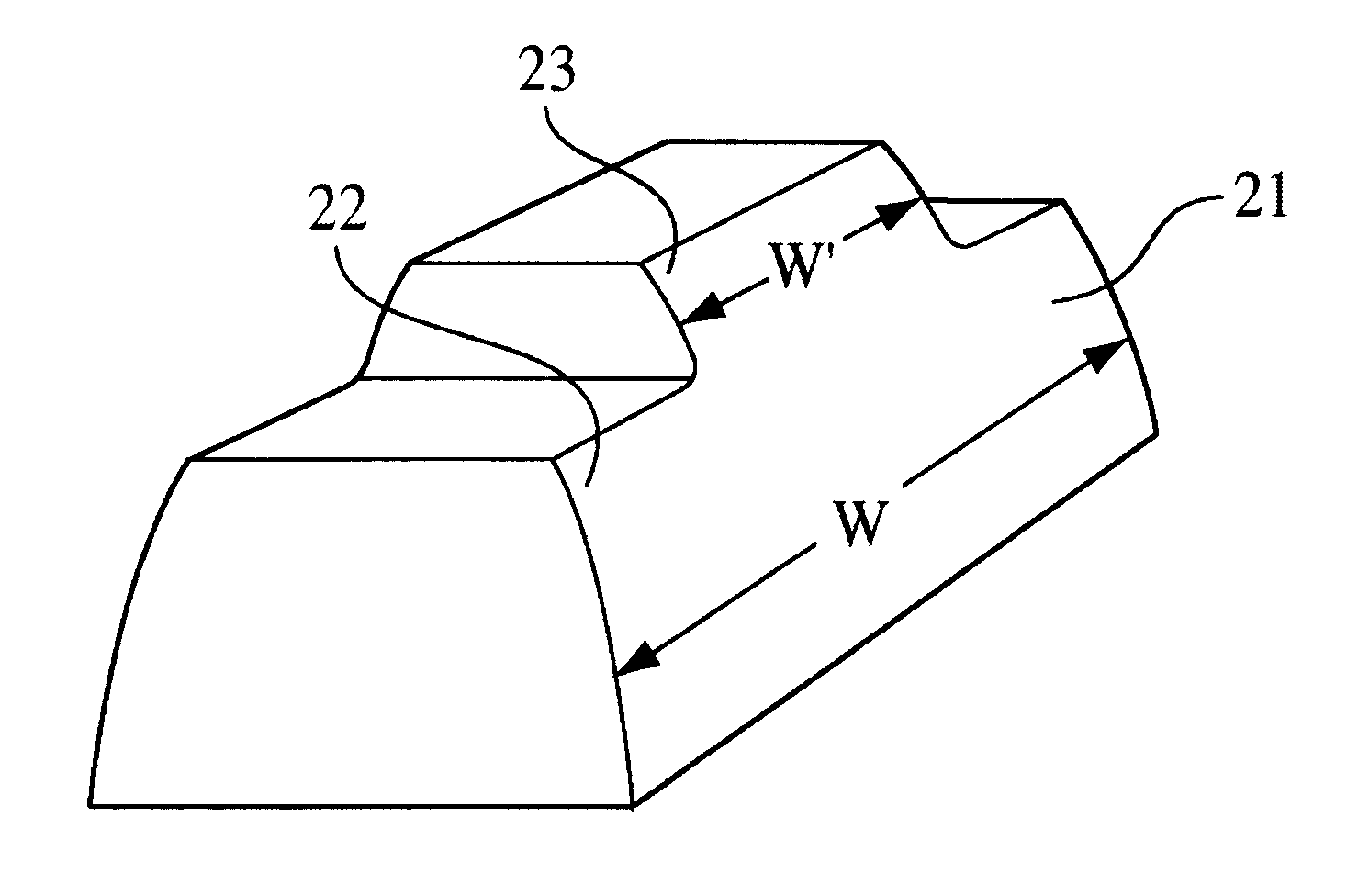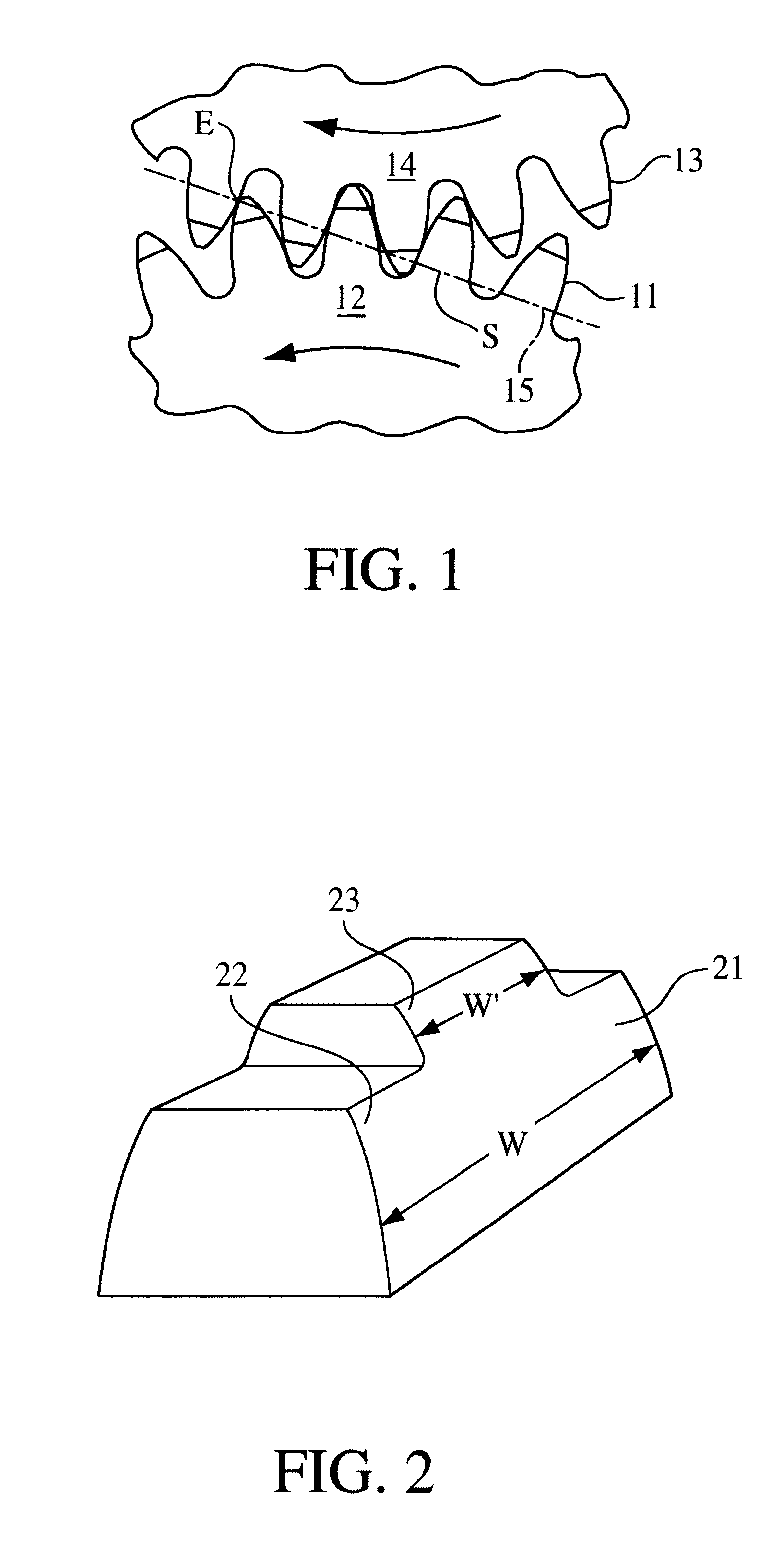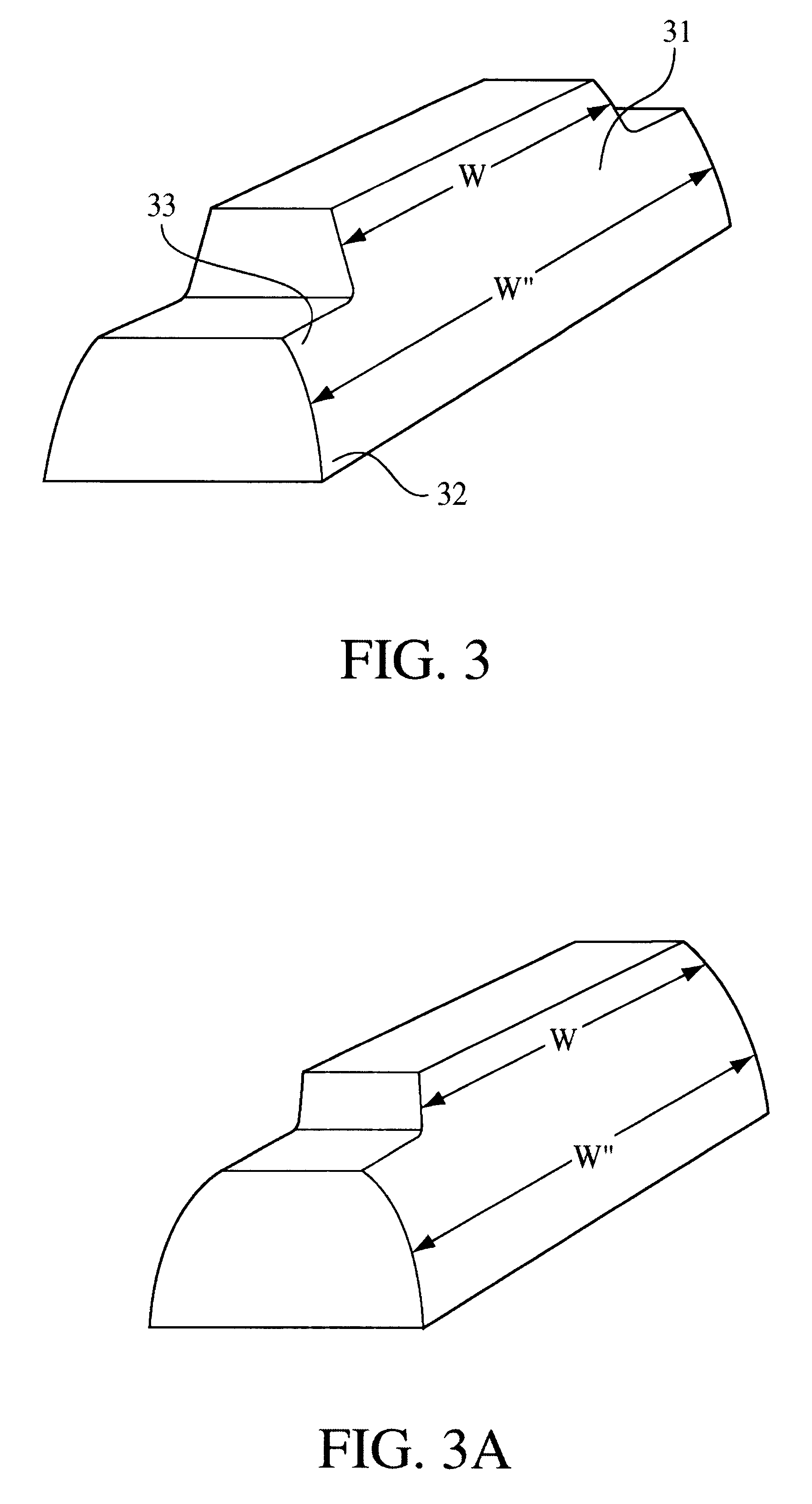Variable face width gearing
a gearing and face width technology, applied in the direction of gearing elements, belts/chains/gearrings, hoisting equipments, etc., can solve the problems that the use of no crowning or a constant crowning curve throughout the tooth height may not provide an ideal solution at all loads, and achieves less expensive, reduces mesh stiffness variation, and reduces the effect of mesh stiffness variation
- Summary
- Abstract
- Description
- Claims
- Application Information
AI Technical Summary
Benefits of technology
Problems solved by technology
Method used
Image
Examples
Embodiment Construction
In detail and referring to the drawings, FIG. 1 is a partial transverse section through a pair of gears 12, 14 embodying this invention. It should be clear to those of ordinary skill in the art that the gears embodying this invention utilize the standard parts of a gear and that standard gear action applies. Teeth 11 on gear 12 and teeth 13 on gear 14 make contact along a pressure line 15 that contains the path of contact extending from Point S and ending at Point E. Accordingly, as the gears rotate through a mesh cycle, the number of pairs of teeth in contact changes, which brings about a large variation in the effective mesh stiffness of conventional gears. It is one advantage of the current invention to minimize this variation in mesh stiffness, which will have the effect of reducing gear noise and increasing power density.
The current invention embodies choosing different face widths at different roll angles or tooth heights of a gear tooth to elastically modify the tooth stiffne...
PUM
 Login to View More
Login to View More Abstract
Description
Claims
Application Information
 Login to View More
Login to View More - R&D
- Intellectual Property
- Life Sciences
- Materials
- Tech Scout
- Unparalleled Data Quality
- Higher Quality Content
- 60% Fewer Hallucinations
Browse by: Latest US Patents, China's latest patents, Technical Efficacy Thesaurus, Application Domain, Technology Topic, Popular Technical Reports.
© 2025 PatSnap. All rights reserved.Legal|Privacy policy|Modern Slavery Act Transparency Statement|Sitemap|About US| Contact US: help@patsnap.com



